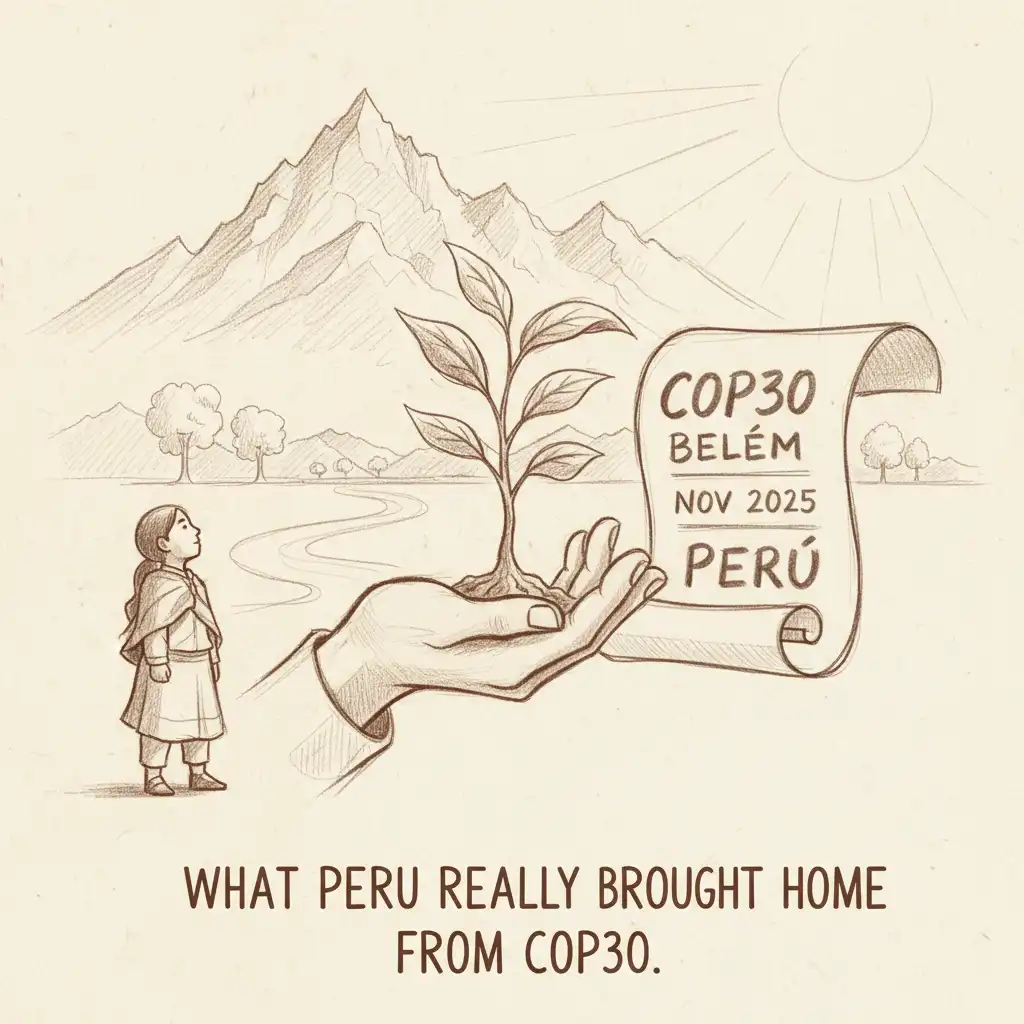Billions for the Amazon What Peru Really Brought Home from COP30 in Belém November 2025

I am sitting on my balcony in Iquitos right now, watching the November rain hammer the Amazon River while the last echoes of COP30 still ring in my ears. For the past two weeks I followed every session from Belém on live streams,
WhatsApp groups with friends at the Peru Pavilion, and late-night calls with indigenous leaders who travelled downriver to be there. When Peru's minister announced the official launch of the Paquete País Perú, I felt something shift. This was not another vague promise. This felt real.
For years we who live and work in Loreto talked about "when the money finally arrives." On November 18 2025 it started arriving, or at least the pipeline opened wide.
What Exactly Is the Paquete País Perú
In simple terms the Paquete País (Country Package Peru) is a ready-to-fund portfolio of high-impact projects designed to turn Peru's climate commitments into bankable reality. Think of it as Peru handing the world a polished investment prospectus that says: "Here are the exact projects, here are the safeguards, here are the indigenous organisations in charge, and here is how every dollar will be tracked."
COP30: Climate Summit Paradox
Exploring the contradictions of COP30: deforestation concerns, private jet emissions, and the environmental impact of climate summits.
Read Full AnalysisAmazon Investment Paradox
Understanding REDD+ programs, land rights conflicts, and the complex dynamics of Amazon rainforest conservation investments.
Explore the IssueThe package focuses on three big pillars
- Secure land titles for indigenous communities (titulacion)
- Scale up indigenous-led REDD+ Jurisdictional programs across entire regions like Loreto, Ucayali and Amazonas
- Bioeconomy and sustainable livelihood projects that keep the forest standing while creating jobs
The genius part? It was built together with AIDESEP (the national indigenous federation) and regional organisations like ORPIO here in Loreto. For the first time the communities themselves decide priorities instead of some office in Lima.
The Money Everyone Is Talking About
Numbers flying around Belém were dizzying. Donors and philanthropies announced commitments that could reach 1.8 billion dollars over the next five years specifically for indigenous and community-led conservation in the Amazon basin. Peru's Paquete País is positioned as the main vehicle to channel a huge chunk of that money straight into the Peruvian Amazon.
At least 20% of many funds must go directly to indigenous organisations — no more money getting stuck in government bureaucracy. That is historic.
Here in Loreto we already see the first movements. The regional REDD+ indígena program that started as a pilot in a few communities is now expanding jurisdiction-wide. Communities along the Napo, Tigre and Pastaza rivers could start receiving payments as early as mid-2026 for keeping their forests intact.
From Belém Stage to Reality on the Ground in Iquitos
I remember 2024 when I visited the Kukama community of San José de Saramuro, three hours downriver from Nauta. They had been fighting for land title for 17 years. This year, thanks to the preparatory work for Paquete País, they finally received their title. At COP30 the community leader told the audience: "Now the forest has an owner — us. And we will protect it better than anyone."
That story repeated dozens of times in Belém. Delegates cried. I cried watching from Iquitos.
Another concrete win is the strengthening of REDD+ Indígena Amazónico (RIA). Peru presented it as a global model: entire indigenous federations manage carbon credits from millions of hectares, with zero leakage and full transparency. Early numbers suggest that successful pilots in Loreto could generate tens of millions annually for health posts, schools, and forest guards.
How This Changes Travel to Iquitos and Loreto in 2026 and Beyond
If you plan an Amazon trip you will feel the difference very soon.
- More communities will have formal titles → fewer land conflicts → safer and more authentic visits.
- Carbon-neutral tours become real, not marketing. Part of your tour price can go directly into community REDD+ funds.
- New regenerative experiences open up: stay in communities that now earn from carbon credits, plant trees that are monitored by satellite, learn how your visit supports anti-mercury campaigns in the rivers.
- Pacaya-Samiria National Reserve and surrounding areas will see increased protection budgets → better wildlife sightings, cleaner rivers.
I am already designing 2026 itineraries where guests meet the people who negotiated in Belém, sleep in lodges built with carbon money, and leave knowing their footprint is not just neutral but positive.
Why This Feels Different From Previous COPs
I covered COP15 in Copenhagen from afar and COP21 in Paris on the ground, COP26 in Glasgow. Always the same pattern: big promises, small delivery. This time the mood shifted. Maybe because the conference was literally in the Amazon. Maybe because indigenous voices finally had the microphone the whole time. Or maybe because everyone knows we are out of time — deforestation numbers for 2025 were terrifying.
Whatever the reason Peru came home with something tangible. The Paquete País is not perfect (bureaucracy still exists and illegal mining will not disappear overnight) but it is the best tool we ever had.
What Happens Next for Loreto and Iquitos
2026 will be the test year. First tranches of funding should arrive mid-year. Communities are already training in financial management and MRV (monitoring, reporting, verification). The regional government of Loreto promised to match international funds with local budget.
If everything aligns we could see the first jurisdiction-wide REDD+ payments flowing to communities around Iquitos by late 2026. That would be life-changing.
I will keep updating from the river as things develop. For now I raise my masato glass to the delegates who fought for us in Belém and to the communities who never stopped guarding the forest.
The Amazon just got a fighting chance. And you want to see the change with your own eyes come visit. We will show you how hope looks when it finally gets funding.
Ready to experience the new Amazon?
Drop your email below and I will send you the first-look itineraries the moment they are ready.
See you on the river.
— Iquitos, 21 November 2025
Ayahuasca Industry Crisis 2025
Government warnings and regulatory changes impacting the ayahuasca tourism industry.
Read Warning Update9 Seed Hacks for $12B Jungle Wins
Proven strategies for early-stage jungle tech investments. Fast-track your portfolio.
Discover StrategiesAmazon Investment Guide 2026
Investment opportunities across Peru, Brazil, and Ecuador for 2026.
View Investment MapArticle 6 Capital Protection
Benefit sharing and capital protection for Amazon conservation projects.
Learn Protection Methods7 Jungle Secrets: 500% VC Returns
Unlock venture capital opportunities in jungle tech with proven strategies.
Access VC SecretsPeru Expat Guide 2025
Complete analysis of living in Peru as an expat. Detailed pros, cons, and insights.
Read Complete GuidePrimary Sources
- Inforegion.pe on the official launch of Paquete País Perú at COP30
- WWF Perú press release on indigenous funding commitments and REDD+ indígena
- El Comercio Perú coverage of Peru's presentation in Belém
- AIDESEP official statements from COP30
- CLUA announcement on the 1.8 billion dollar donor commitment
